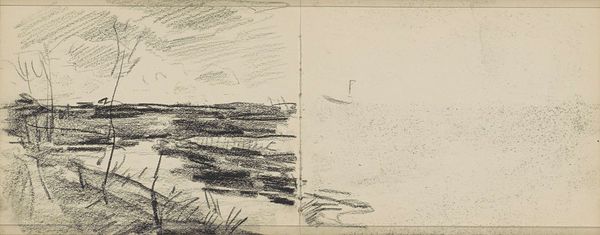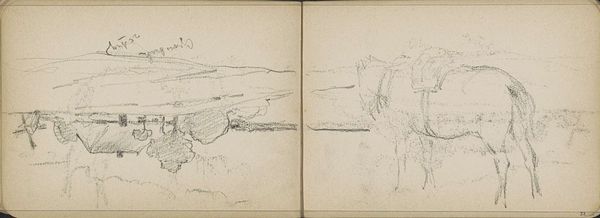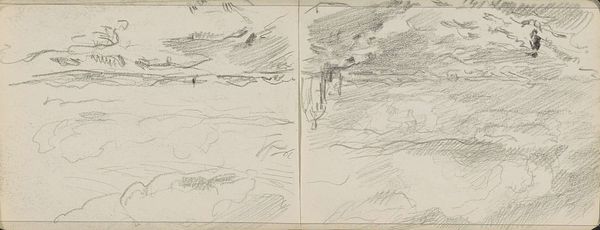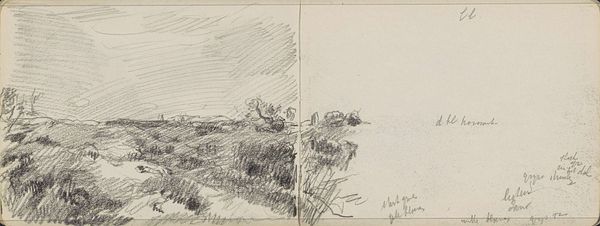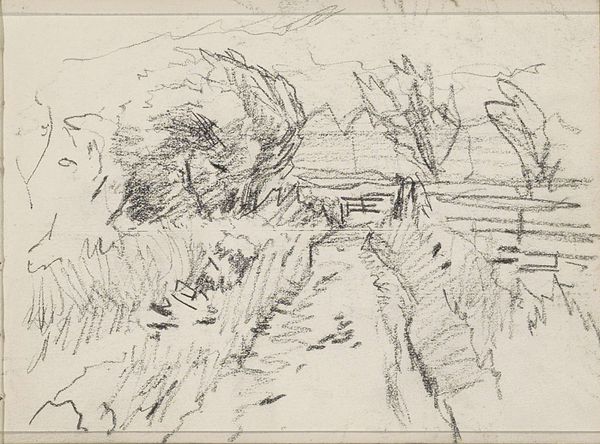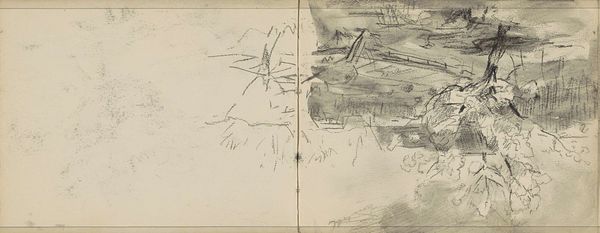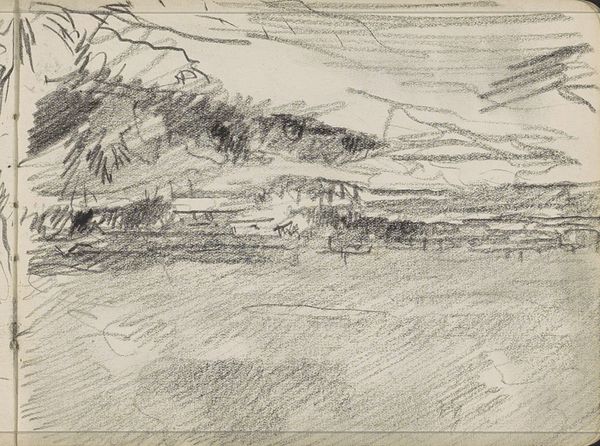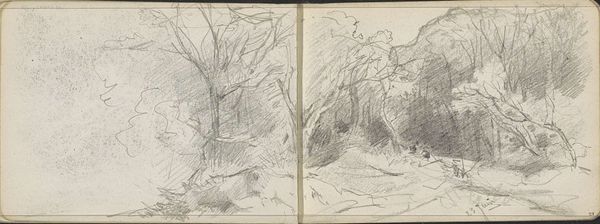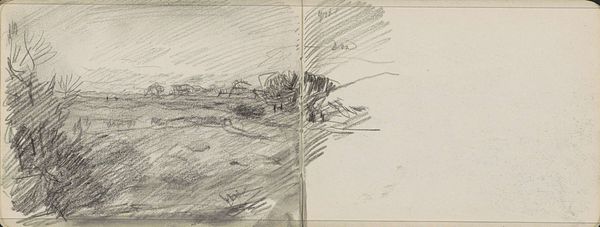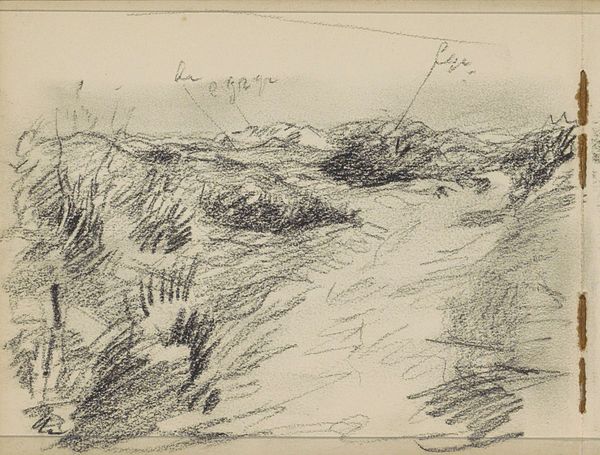
drawing, graphite, charcoal
#
drawing
#
landscape
#
graphite
#
charcoal
#
realism
Copyright: Rijks Museum: Open Domain
Editor: Here we have Johan Antonie de Jonge's "Landschap met twee bomen, mogelijk een duinlandschap," a landscape drawing made with graphite and charcoal sometime between 1881 and 1927. The monochromatic tones create this overwhelming feeling of stillness and solemnity. What historical and social factors might have contributed to this sense of quiet isolation? Curator: Well, consider the time period. This work was created during a time of immense social and political upheaval. The late 19th and early 20th centuries saw rapid industrialization, urbanization, and shifts in social hierarchies. What we might read as isolation could be a response to these pressures. Do you see any signifiers of human presence, or lack thereof? Editor: No, the drawing shows an unpopulated area with two trees. I do see the rough texture, the exposed roots; is it reflecting resilience? Curator: Exactly. And think about the Dutch landscape tradition itself. It's always been deeply intertwined with notions of national identity and resilience. Landscapes served as both a form of cultural expression and sometimes as a silent form of protest, embodying ideas of autonomy and cultural preservation. Might this landscape, stripped down to its bare elements, be saying something about the Dutch spirit in a changing world? Editor: That’s a really interesting point. I was only seeing this as a somber depiction of nature, but I see how it can connect to wider themes of identity. Curator: Perhaps de Jonge’s minimalist rendering prompts a question of sustainability and humans' role. Thinking about it through an eco-critical lens encourages consideration. Editor: Absolutely, it gives so much more to think about. It definitely moved beyond a landscape, thanks! Curator: Likewise, I see this drawing as much more nuanced than when we started.
Comments
No comments
Be the first to comment and join the conversation on the ultimate creative platform.

